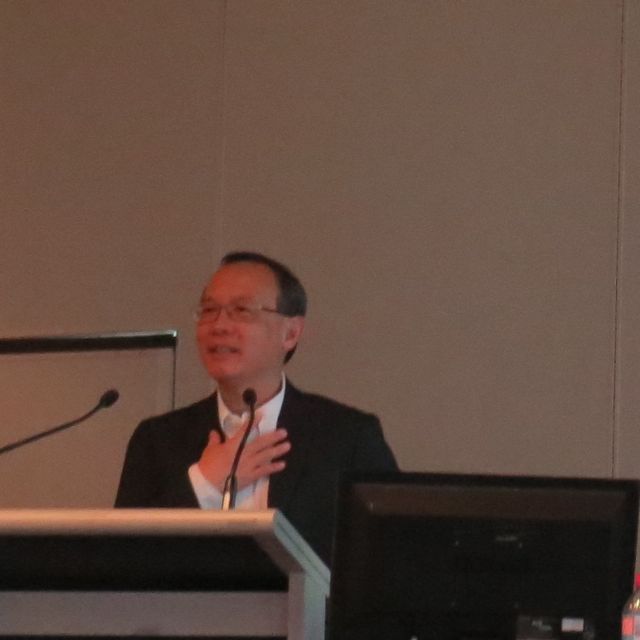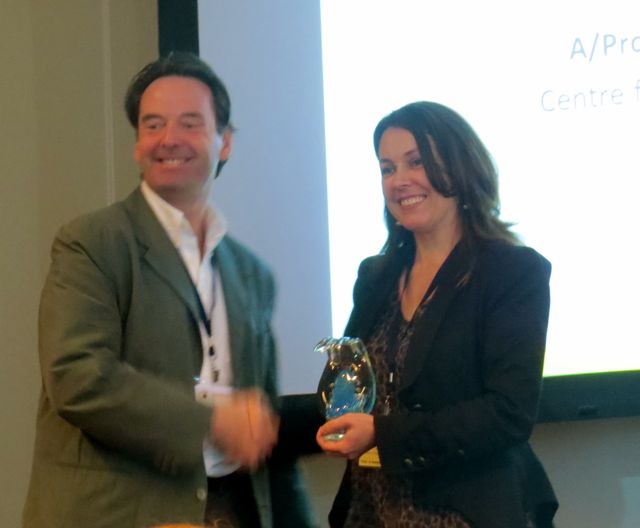Conference report: Combio2013 Perth Australia
Posted by Megan Wilson, on 8 November 2013
ComBio, the largest annual life sciences conference in Australasia, combines the annual meetings of the Australia & New Zealand Society for Cell and Developmental Biology (ANZSCDB), the Australian Society for Biochemistry and Molecular Biology (ASBMB), and the ANZ Society for Plant Biology (ANZSPB). The conference attracts around 1000 researchers, not only from Australia and New Zealand but worldwide. Due to its broad scope, this meeting provides an exceptional opportunity to expand your knowledge beyond one’s own field of research and to meet and net work with leading researchers from all over Australasia.
work with leading researchers from all over Australasia.
This years meeting was held at the Perth Conference and Exhibition Centre in Perth, Western Australia from the 29th September to the 3rd of October. The meeting covered a broad range of topics including developmental and cell biology, cell-cell signaling, gene regulation, structural biology and regenerative science.
There were several Plenary lectures from both local and invited overseas speakers on topics diverse as RNA metabolism, re-designing photosynthesis and the splicesome. Prof. Philip Ingham (A*STAR Insititute of Molecular and Cell Biology Singapore) reflected on a quarter of a century of hedgehog signaling research, his research careers includes many pioneering studies in Drosophila and zebrafish identifying the role of hedgehog signaling components.
With multiple concurrent symposium it was often very hard to decide which talk to attend. I’ve highlighted some of the talks I attended to give you a sense and a taste of the impressive scope of developmental biology research presented at the meeting.
2013 ANZSCDB President Professor Peter Currie (Monash University, Melbourne) discussed his group’s work studying muscle progenitor cell biology in muscle growth and regeneration using a zebrafish model. To study this, they are using transgenic animals to follow old and new growth muscle fibres to determine the age of muscle and trace how muscle grows.
Dr Ian Smyth (also of Monash University in Melbourne) revealed some amazing 3D images showcases the their work using optical projection tomography and their own software (TreeSurveyor) to understand branching morphogenesis during development of the nephrons in the mouse kidney. This technology allows for finer mapping of branch volumes, length and angles to not only study branching over time but also how disease states influence on branching morphogenesis and the final nephron number.
Dr Annemiek Beverdam heads a new group at the University of New South Wales in Sydney, studying the role of YAP proteins in stem cell proliferation in the mouse post-natal epidermis. Skin cancer is a huge problem in Australia and New Zealand, with over 400,000 Australians being treated for skin cancer each year. Her group is studying the role of the Hippo pathway in epidermis homeostasis and skin cancer.
There were several great talks on sex-biased gene expression, sex-differentiation and fertility. Professor Jozef Gecz (University of Adelaide) presented his group’s work investigating sex-differences and abnormal expression of genes in PCDH19-female limited epilepsy disorder. I was honoured to present my own group’s work examining RNA pausing as a mechanism of sex-differential gene regulation during development of the mouse gonad and brain. A/Prof Dagmar Wilhelm (Monash University) presented recently published work on sexually dimorphic expression of short and long ncRNAs and their likely roles in sex determination. Professor Peter Koopman (Institute for Molecular Biosciences, University of Queensland, Brisbane) showcased the latest work from his laboratory on factors influencing the sex specific differentiation of foetal germ cells. Professor Eileen McLaughlin (University of Newcastle, NSW) presented findings on the role of RNA binding proteins Musashi-1 and -2 as key regulators of germ cell development during spermatogenesis in Drosophila and vertebrates.

As always, ComBio also incorporated the annual general meeting and awards presentation for the ANZSCDB. The highly prestigious ANZSCDB President’s Medal was awarded to Professor Alpha Yap from the Institute for Molecular Biosciences at the University of Queensland. Professor Yap’s laboratory studies the cellular mechanisms behind cadherin-morphogenesis and their role in epithelial organization, health and disease. He presented new exciting cell biology studies aiming to understand how cadherins co-operate with the actin cytoskeleton and the factors that drive cell extrusion from an epithelial sheet.
The ANZSCDB Young Investigator Award was won by A/Prof Natasha Harvey (Centre for Cancer Biology, University of Adelaide) for her work studying the development of the lymphatic system, which is not as well understood as the rest of cardiovascular system development. She presented recent work aimed at unraveling the molecular mechanisms behind the role of an ubiquitin ligase protein, Nedd4, essential for the formation of the mouse lymphatic vascular system.

ASBMB Lemberg Lecture and Medal winner Professor Sharah Kumar (also of the Centre for Cancer Biology at the University of Adelaide) gave an overview of his work characterized a several developmentally regulated genes including Nedd genes (ubiquitin ligases) in neural and vascular development and overall animal growth. Mutations in these proteins produce specific developmental phenotypes, and data from his lab show that they are required for correct trafficking of cell surface proteins such as receptor proteins required for the IGF-1 signaling pathway. To further understand the molecular mechanisms of Nedd protein function, the Kumar group have extended their studies into the Xenopus oocyte system and Drosophila, making optimal use of the advantages these systems offer over mammalian models.
If you’re interested in attending Combio2014, to be held in Australia’s capital Canberra, information can be found at http://www.asbmb.org.au/combio2014/.
For more information on the activities of the ANZSCDB have a look at the Society’s Facebook page or follow the @ANZSCDB on Twitter.
Dr Megan Wilson (@DrMegsW)


 (4 votes)
(4 votes)